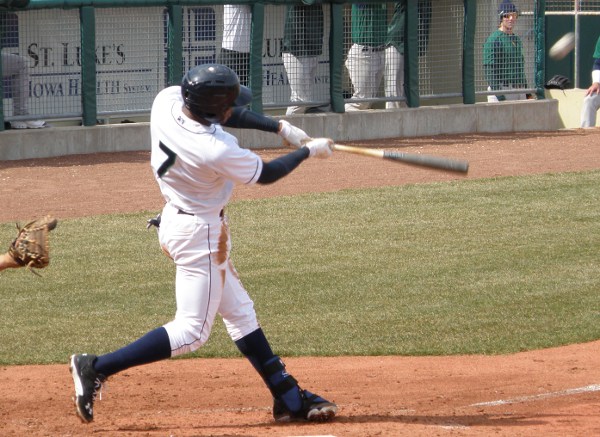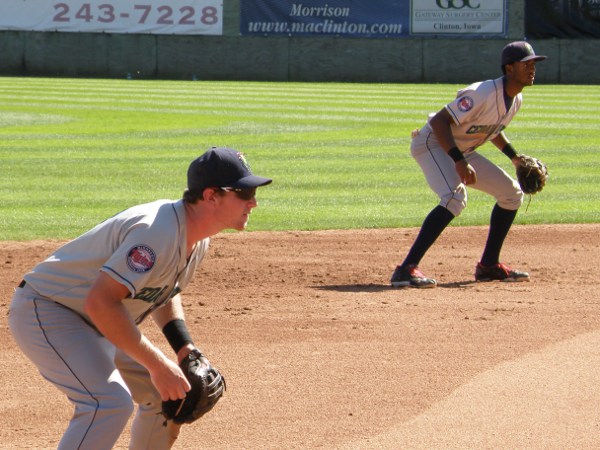If it’s November, it must be “Top Prospect List” season.
Last year, I waited until the end of December to publish my personal “Twins Top 15 Prospects” list, which allowed me to include pitchers Alex Meyer and Trevor May after they were acquired by Twins General Manager Terry Ryan in off-season trades. Waiting also allowed me to get a look at a number of lists published by “experts” far smarter than I am.
All things considered, I should probably wait until closer to year end to put my list out there again. But I’m not going to do that.
If there are deals made that bring in new prospects or send away players on this list, so be it. I feel like writing and throwing a Top Prospects list out here seems to be a better use of my time than trying to come up with an off-season blueprint. And, honestly, it’s a lot easier to rank some prospects than try to figure out how to fix all the problems Terry Ryan’s facing with rebuilding the Twins’ roster.
A year ago, I came down on the side of ranking Byron Buxton as the Twins’ number 1 prospect over Miguel Sano.
I had the good fortune of getting to watch Buxton play almost every home game he suited up for with Cedar Rapids before his promotion to Fort Myers, as well as a number of his road games with the Kernels. I believe he was better than any other ballplayer I’ve seen in a Cedar Rapids uniform and that includes Mike Trout.
So, naturally, I’ll have to rank him ahead of Sano in the number 1 spot again this year, right?
Well… yes and no.
What I wrote last year still holds true for me today. Buxton’s potential to play an extraordinary centerfield defensively makes him a better prospect to me than Sano. Centerfield is just about the most critical position on the field (especially on Target Field) and Buxton is simply an amazing outfielder. In fact, the only position in baseball more important than centerfield is probably that of starting pitcher.
And that’s why my number 1 ranked prospect this year is…
- Alex Meyer (RHP) – Meyer had a good first year in the Twins organization after coming over from the Nationals in the trade for Denard Span a year ago, but he has appeared to really step up his game in the Arizona Fall League. His fastball is touching 100 mph and averaging between 97 and 98 on the gun. He’s missing bats. He’s dominating some good hitters. He has the potential to be not only a top of the rotation starting pitcher within the next couple of years for the Twins, but to be a legitimate ace. He looks to be to the pitching staff what Buxton could be to the batting order, but he’s a level higher in the organization and thus, arguably, closer to actually realizing that potential than Buxton is.
-
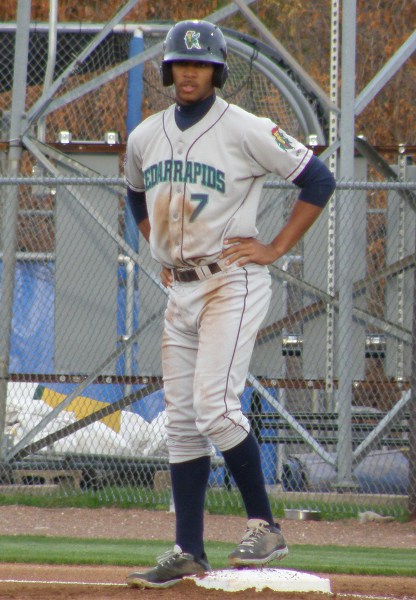
Byron Buxton Byron Buxton (CF) – Buxton is the real deal, folks. There’s nothing he can’t do on a baseball field. In fact, I honestly believe if you wanted to make him a pitcher, he could give the Twins one heck of a 1-2 rotation punch, with Meyer, for years to come. But he’s just too dang good at everything else to consider that option. When he learns to read pitchers a little better on the bases, he will be almost impossible to keep out of scoring position. That’s good news for guys looking to drive in a lot of runs, like, for example…
- Miguel Sano (3B) – The best news of 2013 for Twins fans regarding Sano might have been the reviews of his improvements defensively at the hot corner. Let’s face it, a guy who hits like Sano is going to be in the heart of your batting order. But if he can also play a passable third base, that frees a GM and manager up to put other talented hitters who aren’t strong defensively in the corner outfield spots, at first base and/or at designated hitter. Think about this: if Sano sticks at 3B and Mauer can remain behind the plate most of the time, in a year or two, the Twins three best hitters may be their catcher, centerfielder and third baseman. And there’s no shortage of above average hitting prospects in the pipeline to fill the corner OF, 1B and DH spots.
- Eddie Rosario (2B/OF) – Speaking of getting outstanding offensive production out of traditionally unexpected positions, if Rosario remains a second baseman, that’s yet another potentially productive bat from a middle infielder. Of course, with Brian Dozier having a solid year at 2B for the Twins, there’s talk of either moving Rosario back to the outfield or possibly even dangling him as trade bait for much-needed pitching help.
- Kohl Stewart (RHP) – As has often been said, it’s risky to rank a prospect this high who hasn’t even played his first year of full-season professional ball. Then again, that didn’t seem to keep any of us from ranking Buxton at or near the top of our prospect lists a year ago and he hasn’t made us regret the faith we placed in him. I tend to think that most first round draft picks warrant a high ranking if they show the expected promise in their first taste of short-season ball. If Stewart dominates Class A hitters in 2014, he’ll be a top 3 prospect next year.
-
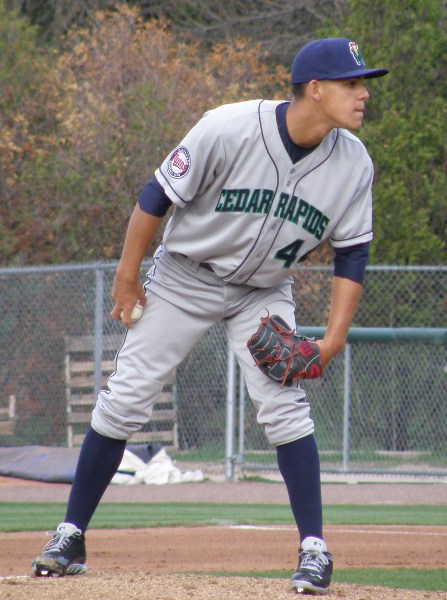
Jose Berrios Jose Berrios (RHP) – It was cool to be able to watch Berrios strike out Robinson Cano in the WBC tournament last spring, but part of me wonders what his season might have been like if he hadn’t spent that time in the bullpen of Team Puerto Rico. He had some very impressive starts for Cedar Rapids, but he also had some clunkers. He certainly appeared to tire toward the end of the season. However, I also felt he showed more maturity on the mound as the summer went on.
- Josmil Pinto (C) – Pinto has one thing that none of the other guys on this list have and that’s a Major League resume. In fact, none of the other players on this list have even played AAA ball yet. Pinto produced at AA, AAA and in the Big Leagues during his September call-up and he plays a critical defensive position. He’s not a finished product behind the dish, by any means, but the season he had in 2013 has to make him a Top 10 prospect for the Twins. He’s the guy that makes us feel a bit better about the potential move to first base by Joe Mauer.
- Jorge Polanco (INF) – While I’m not sure Polanco has the tools to be a starting shortstop at the Major League level, his bat has shown two consecutive years of consistent productivity. He hits the ball hard and if he can turn some of those line drives in to something with a bit more loft, he will hit more home runs. I think his long term position is second base and, that said, if the Twins don’t deal Dozier and don’t move Rosario to the outfield, Polanco could be a guy the Twins start getting some calls about.
-
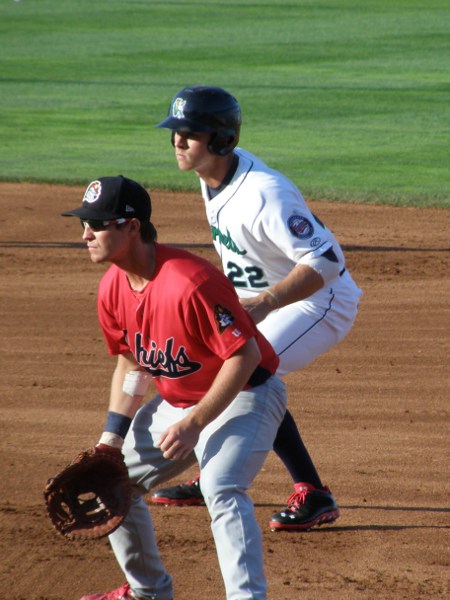
Max Kepler gets a secondary lead off first base Max Kepler (OF/1B) – I’ll admit that Kepler’s continued top-10 ranking is, for me, more reflective of his athleticism than of his on-field performance and that makes me uncomfortable. He killed right handed pitching but struggled against lefties. His defense in the outfield was inconsistent and I just don’t think his throwing elbow was ever 100% in Cedar Rapids. That’s a concern, as well. I thought he did a nice job at first base for a guy who hadn’t played there a ton and with all of the outfield prospects the Twins have, 1B could be Kepler’s ultimate position if he stays in the Twins organization. He hasn’t been on fire in his Arizona Fall League work, but it sounds like he hasn’t been completely overmatched, either, and that’s encouraging.
-
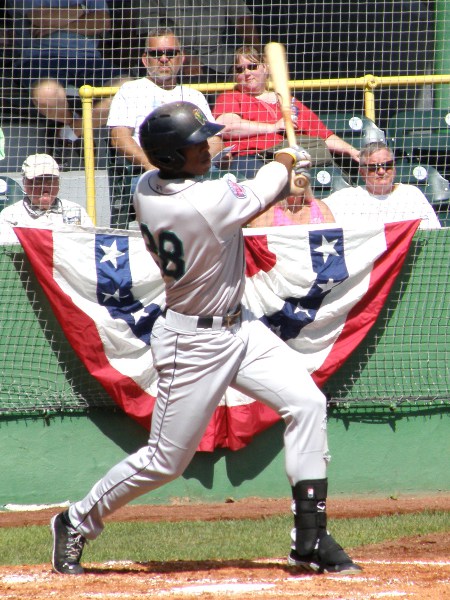
Adam Brett Walker lines a home run vs Clinton on September 2 Adam Brett Walker (OF) – Honestly, in my mind, the Twins have a definite “Top 9” prospects and then seven guys that are all pretty equal that fill out a Top “16” list. I’m giving Walker the nod in to the Top 10 because I saw the way Tony Oliva’s eyes lit up watching him play. When Oliva made an appearance in Cedar Rapids this summer, I found myself in the pressbox alone with him for an inning or so. He wanted to talk about Walker. I told him I thought Walker needed to learn to take that outside pitch to the opposite field and Oliva’s response was something along the lines of, “Noooo, why?! Let him pull the ball!” And you could just see in his eyes and his smile that he really liked Walker as a hitter. With that kind of endorsement, how could I not include Walker in the Top 10?
- Lewis Thorpe (LHP) – Not only has Thorpe not had a year of full-season professional ball yet, he hasn’t even made it out of the Gulf Coast League. But a 17 year old lefty who can throw 95 mph and drop a pretty good hammer, as well, is impossible to ignore. The Aussie struck out 64 hitters in just 44 GCL innings in 2013. I know they say you have to ignore GCL stats, but I can’t ignore that one.
- Trevor May (RHP) – May, who came over from the Phillies organization a year ago in the Ben Revere trade, missed some time in 2013 and again during the Arizona Fall League. The Twins probably still aren’t sure if he’ll end up in the rotation or bullpen, so he needs a healthy 2014 season to really impress.
-
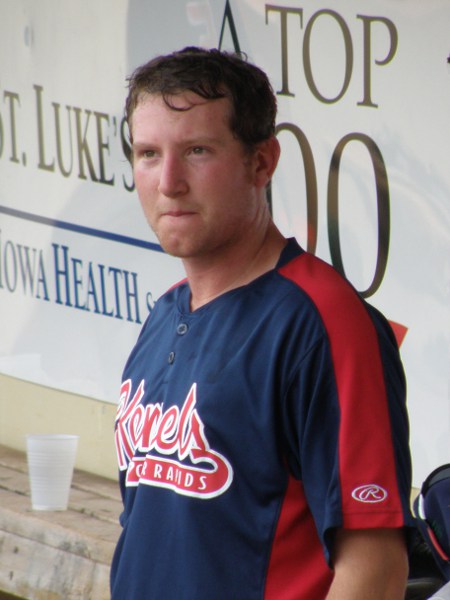
Travis Harrison Travis Harrison (3B/OF) – I’m wondering if the organization might move Harrison back to his natural corner OF position now that they seem confident Sano can stick as a third baseman. Harrison can hit a baseball very hard. Whether he moves up or down this list by next year will depend somewhat on whether the Twins find a defensive position he can potentially play at the MLB level.
- Stephen Gonsalves (LHP) – Ordinarily, you wouldn’t see a 4th round pick from the prior year in your Top 15 list, but Gonsalves was reportedly on track to be a 1st round pick before a disciplinary issue arose during his senior year of HS, allowing the Twins to get a potential steal. If he can add some bulk to his 6’ 5” frame and a couple of ticks on his fastball, he could become very good very quickly.
- Miguel Sulbaran (LHP) – Sulbaran largely is flying under the radar among the Twins prospects. Maybe it’s his 5’ 10” stature. Maybe it’s that he only spent a few weeks in the organization after coming over from the Dodgers. Maybe it’s that he was obtained for Drew Butera. Sulbaran may not be tall, but he’s got a pitcher’s lower body and he uses it to get good drive off the mound. He struck out over eight batters per nine innings in 2013 and he has something a lot of other pitchers at his level don’t: an out pitch. His change-up is the real thing.
That final spot was a tough one to decide on as shortstop Danny Santana arguably should be on this list somewhere. In the end, I decided he just made too many errors to project as a defense-first shortstop and didn’t get on base often enough to project as a top of the order hitter. This is going to be a make or break year for Santana, I think.
So that’s my list. I’d like to see a few more guys that are closer to being “Major League-ready,” but I just don’t see a ton of high ceiling guys in the high-minors of the Twins organization right now and high ceilings are what I tend to look for in my rankings.
– JC

